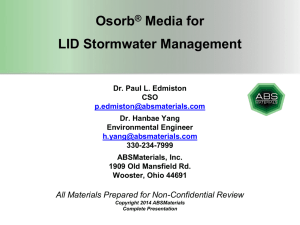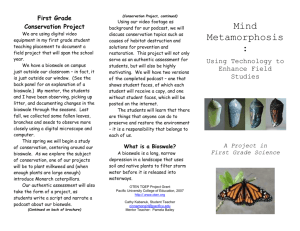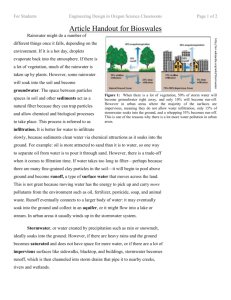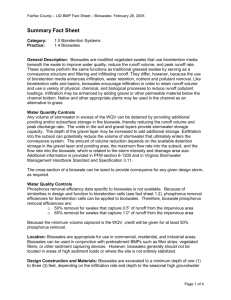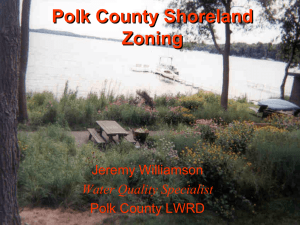Bioswales 101 The fringe space Bioswales are very similar to rain
advertisement
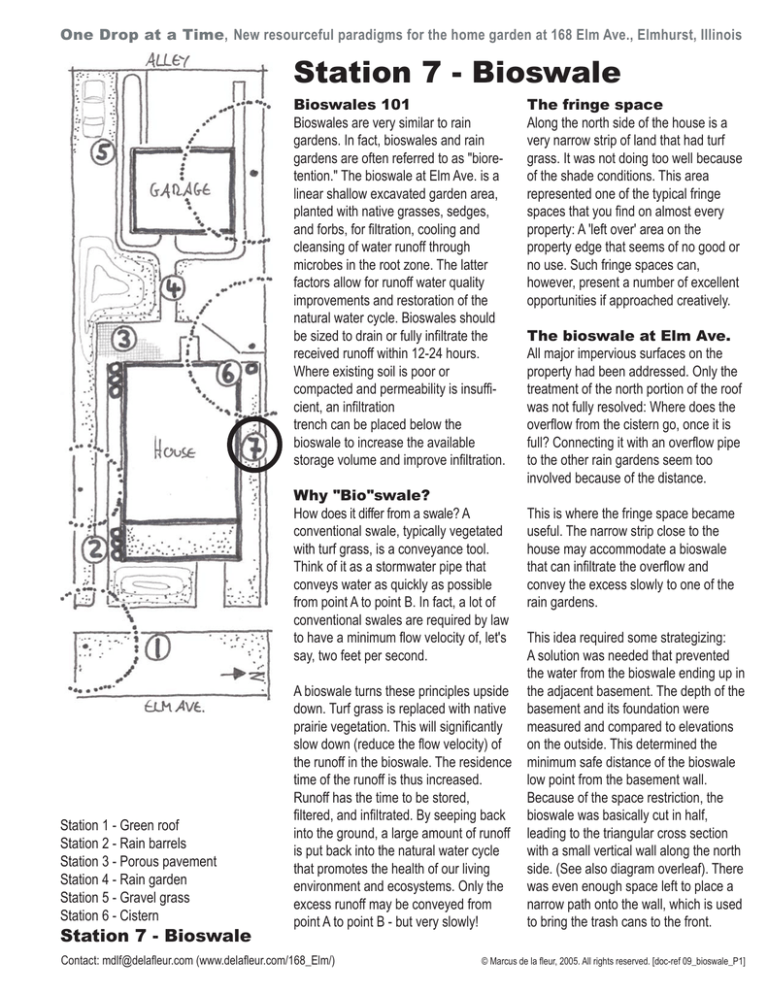
One Drop at a Time, New resourceful paradigms for the home garden at 168 Elm Ave., Elmhurst, Illinois Station 7 - Bioswale Bioswales 101 Bioswales are very similar to rain gardens. In fact, bioswales and rain gardens are often referred to as "bioretention." The bioswale at Elm Ave. is a linear shallow excavated garden area, planted with native grasses, sedges, and forbs, for filtration, cooling and cleansing of water runoff through microbes in the root zone. The latter factors allow for runoff water quality improvements and restoration of the natural water cycle. Bioswales should be sized to drain or fully infiltrate the received runoff within 12-24 hours. Where existing soil is poor or compacted and permeability is insufficient, an infiltration trench can be placed below the bioswale to increase the available storage volume and improve infiltration. Why "Bio"swale? How does it differ from a swale? A conventional swale, typically vegetated with turf grass, is a conveyance tool. Think of it as a stormwater pipe that conveys water as quickly as possible from point A to point B. In fact, a lot of conventional swales are required by law to have a minimum flow velocity of, let's say, two feet per second. Station 1 - Green roof Station 2 - Rain barrels Station 3 - Porous pavement Station 4 - Rain garden Station 5 - Gravel grass Station 6 - Cistern Station 7 - Bioswale A bioswale turns these principles upside down. Turf grass is replaced with native prairie vegetation. This will significantly slow down (reduce the flow velocity) of the runoff in the bioswale. The residence time of the runoff is thus increased. Runoff has the time to be stored, filtered, and infiltrated. By seeping back into the ground, a large amount of runoff is put back into the natural water cycle that promotes the health of our living environment and ecosystems. Only the excess runoff may be conveyed from point A to point B - but very slowly! Contact: mdlf@delafleur.com (www.delafleur.com/168_Elm/) The fringe space Along the north side of the house is a very narrow strip of land that had turf grass. It was not doing too well because of the shade conditions. This area represented one of the typical fringe spaces that you find on almost every property: A 'left over' area on the property edge that seems of no good or no use. Such fringe spaces can, however, present a number of excellent opportunities if approached creatively. The bioswale at Elm Ave. All major impervious surfaces on the property had been addressed. Only the treatment of the north portion of the roof was not fully resolved: Where does the overflow from the cistern go, once it is full? Connecting it with an overflow pipe to the other rain gardens seem too involved because of the distance. This is where the fringe space became useful. The narrow strip close to the house may accommodate a bioswale that can infiltrate the overflow and convey the excess slowly to one of the rain gardens. This idea required some strategizing: A solution was needed that prevented the water from the bioswale ending up in the adjacent basement. The depth of the basement and its foundation were measured and compared to elevations on the outside. This determined the minimum safe distance of the bioswale low point from the basement wall. Because of the space restriction, the bioswale was basically cut in half, leading to the triangular cross section with a small vertical wall along the north side. (See also diagram overleaf). There was even enough space left to place a narrow path onto the wall, which is used to bring the trash cans to the front. © Marcus de la fleur, 2005. All rights reserved. [doc-ref 09_bioswale_P1] One Drop at a Time, New resourceful paradigms for the home garden at 168 Elm Ave., Elmhurst, Illinois Small wall with path © Marcus de la fleur, 2005 Maximum water level Summary of bioswale benefits: Plants in the Elm Ave. bioswale: 1) Reduces runoff volumes and rates from roofs, pavements, and lawns 2) Recharges groundwater and sustains base flows to natural water bodies 3) Reduces sediment, nutrient runoff, and other pollutants 4) Reduces maintenance requirements compared to conventional lawn surfaces or other irrigated plantings 5) Effective land use through combination of stormwater management and ornamental planting 6) Aesthetic value 7) Diversifies site habitat 8) Can reduce the need for costly stormwater infrastructure Grasses and Sedges: Contact: mdlf@delafleur.com (www.delafleur.com/168_Elm/) Straight-Styled Wood Sedge (Carex radiata) Silk Wild Rye (Elymus villosus) Bottelbrush Grass (Hystrix patula) Spike Grass (Uniola latifolia) Forbs: Sky-Blue Aster (Aster azureus) Purple Coneflower (Echinacea purpurea) Late Boneset (Eupatorium serotinum) Wild Geranium (Geranium maculatum) Gray-Headed Coneflower (Ratibida pinnata) Brown-Eyed Susan (Rudbeckia triloba) © Marcus de la fleur, 2005. All rights reserved. [doc-ref 09_bioswale_P2]
